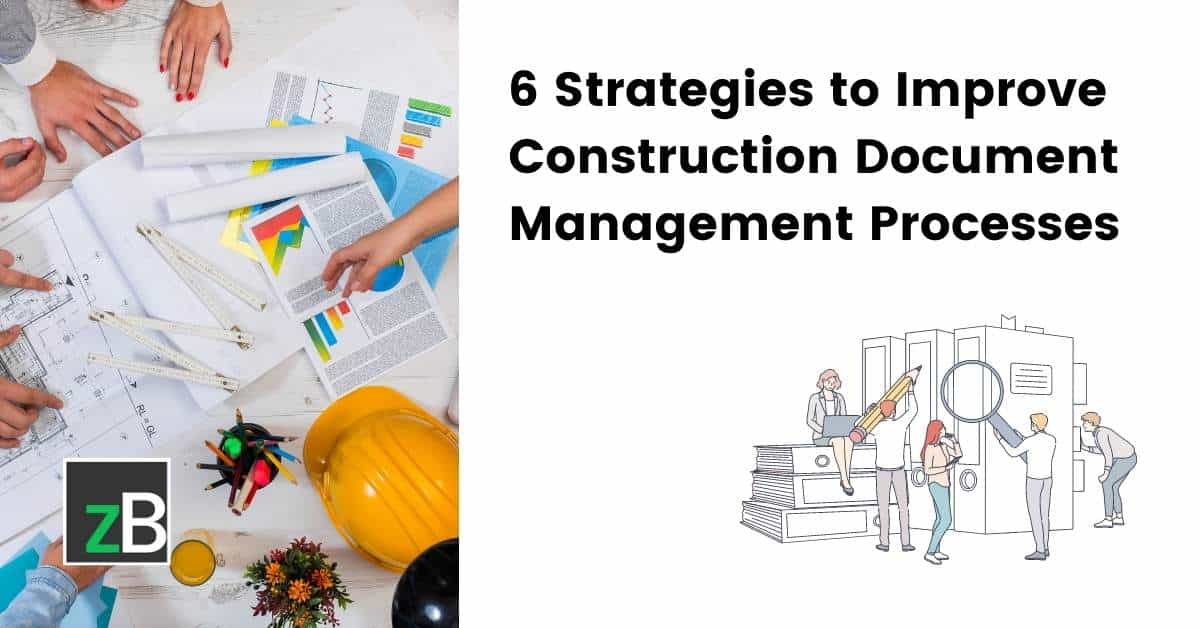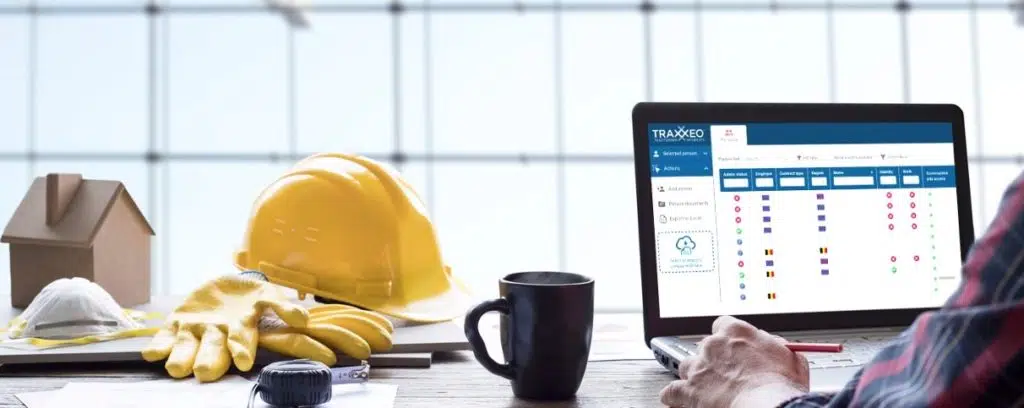Raise Your Project Management: Construction Document Management Devices You Required
Raise Your Project Management: Construction Document Management Devices You Required
Blog Article
Optimizing Job Partnership: Architect's Ideal Practices in Construction Paper Management
In the complex world of architectural jobs, the reliable management of building and construction files stands as a cornerstone for success. Architects, with their precise interest to information and cutting-edge layout solutions, are charged with orchestrating a harmony of timelines, stakeholders, and sources. Nonetheless, amidst this complexity exists a sixty-four-thousand-dollar question: how can designers improve partnership procedures to improve job results? By discovering essential approaches such as leveraging cloud-based platforms, developing robust interaction procedures, and making certain data protection, architects can boost their record management techniques to new elevations.
Leveraging Cloud-Based Platforms
Leveraging cloud-based platforms is a basic method for modern-day designers in maximizing construction record monitoring procedures. By transitioning from conventional paper-based systems to shadow solutions, designers can streamline collaboration, boost record ease of access, and improve overall job performance. Cloud-based systems provide engineers the capability to store, share, and update building and construction files in real-time, guaranteeing that all employee have accessibility to one of the most present information no matter their location. This access promotes seamless interaction and control amongst project stakeholders, causing less mistakes and delays in the building and construction process.
Additionally, cloud-based platforms provide a safe and secure setting for storing delicate project details, providing security, regular backups, and individual approval setups to shield information stability. Architects can also gain from the scalability of cloud solutions, enabling them to adjust storage space ability and functionality based upon task demands. Generally, leveraging cloud-based platforms encourages engineers to maximize their building paper administration processes, driving higher cooperation, efficiency, and success in their tasks.
Implementing Variation Control Equipment
Having developed the advantages of cloud-based systems in building record management, designers can currently improve their document control procedures by implementing Variation Control Equipment. Version Control Systems (VCS) are necessary tools that track adjustments in documents, making certain that employee are always collaborating with the most recent and most exact info. By implementing VCS, architects can preserve a centralized repository where all job papers are kept, enabling seamless cooperation while lessening the risk of mistakes and variation conflicts.
One key advantage of Variation Control Equipment is the ability to track the total background of document modifications, allowing users to change to previous variations if needed (construction document management). This feature is particularly beneficial in building and construction tasks where style iterations and adjustments are typical. VCS promotes far better communication among team participants by offering a clear audit route of who made specific modifications and when they were made. This transparency not only improves responsibility however also aids in fixing conflicts or inconsistencies that might occur during the project lifecycle.
Establishing Interaction Procedures
To make sure effective and effective task coordination, architects need to develop clear and robust interaction protocols within their building and construction file management processes. Communication methods specify the methods, frequency, and channels whereby group participants exchange details, updates, and feedback. One crucial aspect of developing these procedures is identifying a central interaction system where all project-related discussions and document sharing can take place. This system might be a project management software, e-mail threads, or cloud-based storage remedies. By setting guidelines on exactly how info is useful source distributed and exactly how staff member connect with each various other, engineers can enhance the circulation of data and prevent miscommunications or hold-ups in the building and construction process.
Moreover, communication methods must likewise consist of guidelines on exactly how to handle disputes, modification orders, and urgent issues that might develop during the job lifecycle. Establishing a structured technique to communication makes certain that all stakeholders are on the same web page, promotes transparency, and ultimately contributes to the effective conclusion of the building task.
Using BIM Software Application for Control
BIM software program plays an essential function in boosting coordination amongst task staff member in the construction industry. Building Information Modeling (BIM) assists in partnership by offering a central system where architects, designers, specialists, and other stakeholders can interact in a coordinated manner. With BIM software program, project participants can access and update a common model which contains detailed information about the building design, building and construction elements, and job schedules.

In addition, BIM software enables real-time collaboration and interaction amongst group members, no matter their physical area. Via cloud-based BIM platforms, task stakeholders can access the current job information, track adjustments, and make educated decisions without delay. Generally, leveraging BIM software for sychronisation boosts job effectiveness, productivity, and ultimately leads to successful task results.
Ensuring Information Protection and Compliance
In the realm of construction file monitoring, securing data integrity and ensuring governing conformity are vital considerations for engineers and various other job stakeholders. Architects need to implement robust safety measures to protect delicate job info from unauthorized gain access to or breaches. Utilizing safe and secure cloud storage space options with file encryption protocols and gain access to controls can assist minimize threats connected with information burglary or loss. Regularly updating software application and systems, carrying out safety audits, and offering staff training on information protection finest methods are important action in keeping a protected atmosphere for building document monitoring.

Conclusion
In verdict, engineers can optimize task partnership in construction file management by leveraging cloud-based platforms, executing version control systems, developing communication protocols, making use of BIM software program for sychronisation, and ensuring data security and conformity. These ideal practices help improve the construction process, improve communication among task stakeholders, and enhance efficiency in task distribution. By adhering to these guidelines, designers can successfully manage my response construction papers and facilitate effective task outcomes.
Through BIM software program, task participants can access and update a common design that has thorough information about the building layout, building and construction elements, and task routines.
Through cloud-based BIM platforms, task stakeholders can access the newest job info, track modifications, and make educated decisions promptly - construction document management. Overall, leveraging BIM software application for sychronisation improves task performance, productivity, and inevitably leads to successful job results
In conclusion, designers can optimize task cooperation in construction document monitoring by leveraging cloud-based systems, applying variation control systems, establishing interaction protocols, utilizing BIM software program for coordination, and guaranteeing information protection and conformity. These ideal practices help improve the building and construction procedure, boost interaction amongst task stakeholders, and boost effectiveness in project delivery.
Report this page